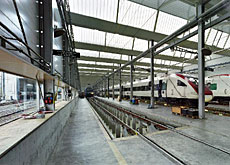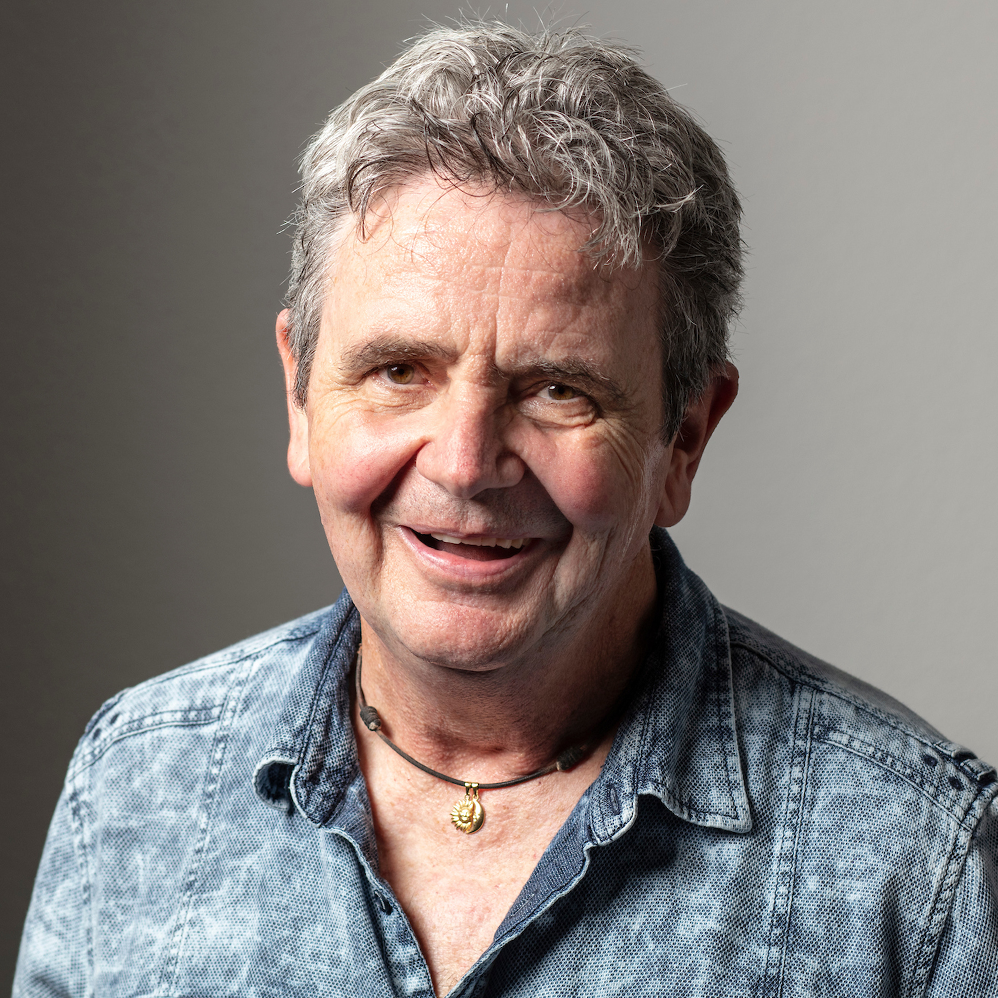Geneva rail centre spruces up the trains

On entering Geneva’s main station, Cornavin, rail passengers travel past what seems like a never-ending facade covered with wooden slats.
This is the unique visiting card of the Federal Railways’ train composition maintenance centre.
In this exceptional building, InterCity trains are rapidly given a cosmetic makeover between two journeys across Switzerland.
“It’s an industrial site and it was therefore logical to use traditional materials of industry such as concrete, steel, and glass. Wood, on the other hand, is more unexpected,” explains Jean-Michel Bringolf, head of the railway’s architectural project management for the French-speaking part of Switzerland.
From the outset, and in agreement with local political authorities, it was foreseen that the building should contain as much wood as possible.
Free port
This aimed not only at promoting the use of wood but also acting as a reminder that the site served for a long time as Geneva’s free port, which spread its immense wooden warehouses alongside the tracks.
“We soon found out that wood was not suitable for load-bearing structures, wasn’t solid enough and was too expensive,” Bringolf says. The architects therefore suggested using wood to cover the exterior facades.
“To complicate their lives a little, we asked them to do that for the same price as traditional profiled sheet metal.”
To achieve this ambitious goal, the builders had the “stroke of genius” to cover the facades with small panels – measuring 75 by 35 centimetres – which overlap like the wooden tiles that traditionally cover the roofs of mountain chalets.
“Except in this case, each piece is at least ten times thicker than on a chalet,” Bringolf explains.
Tried and tested
For the remainder, the building uses the tried and tested materials of industrial construction, with a crenellated roof containing glass that lets in daylight.
And, of course, everything has been thought of to make the centre a functional, economic and ecological building.
“We have applied traditional solutions here but with a lot of subtlety and elegance,” explains Bringolf, who could count on renowned engineers and architects like Jacques Richter and Ignacio Dahl Rocha of Lausanne to construct it.
Inside the building, it’s a hive of activity, with a total of 130 people working 16 consecutive hours or more.
The maintenance centre is devoted first and foremost to the 44 InterCity tilting train compositions (ICN), each with seven carriages which are never separated.
Two hours
Each train stays no longer than two hours here, the time it takes to do technical maintenance and cleaning.
To do this, the trains are driven onto one of the five tracks above a kind of pit that gives maintenance staff easy access to work underneath the trains.
And for the work that has to be done on the top, the electrical contact lines are retractable – a technical piece of cunning still unique in Switzerland.
“Here we do not carry out any large-scale maintenance, we are not an engineering works,” says Patrick Caillet, who is head of the site. “On the other hand, we have done retrofits on all the ICN trains, which have some teething problems when they leave the factory.”
Despite that, the centre is equipped to reprofile train wheels – work that is necessary every 250,000 kilometres. When you realise that an ICN travels between 1,000 and 1,500 km per day, there is little let-up.
Change wheels
And when the time comes to change the wheels after a million kilometres, the centre has a lift that allows a whole bogie – two axles with their wheels – to be replaced without the carriages leaving the rails.
Located at the end of the network line, similar to Basel, Chiasso and Romanshorn, Geneva was the idea place to house this centre, where trains are also spruced up.
“Smoking compartments on average give us 30 per cent more work to clean,” comments Caillet, who is looking forward to the arrival of new Cisalpino compositions which will all be non-smoking trains.
That is one step perhaps in the direction of non-smoking trains on the entire Swiss Federal Railways network.
But there remains the problem of graffiti. The sprayer bands are well organised. They strike at night and use night-vision instruments to avoid drawing attention.
And they often switch on to police telecommunications networks so that they can run off at the slightest warning.
When it comes to graffiti, the Federal Railways’ policy is clear: it is cleaned up as soon as possible, whatever the “artistic” value of the work might be. It has, in fact, been proven that passengers do not feel secure when carriages have been covered with gaudy colours.
“Besides,” adds Caillet, “the aim of these people is [for their works] to be seen.
Therefore, if their works disappear almost immediately, the chances are that it will discourage them.”
swissinfo, Marc-André Miserez in Geneva
The Swiss Federal Railways’ national train composition maintenance centre in Geneva was inaugurated in summer 1999, after two years of construction.
The building, which is 310 metres long, 45 metres wide and 10 metres high, houses 1.27 kilometres of track for the maintenance and cleaning of trains, which on average stay there under two hours.
The centre occupies the former site of Geneva’s free port warehouses.

In compliance with the JTI standards
More: SWI swissinfo.ch certified by the Journalism Trust Initiative

You can find an overview of ongoing debates with our journalists here. Please join us!
If you want to start a conversation about a topic raised in this article or want to report factual errors, email us at english@swissinfo.ch.